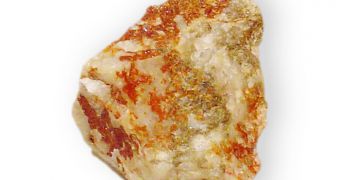The NASA Mars Exploration Rover Opportunity found traces of the mineral jarosite on the surface of the Red Planet some time ago. Since then, investigators at the Syracuse University have been trying to determine how to best use the material in order to determine when liquid water flowed on Mars.
The mineral can also be found here on Earth. Geological studies have determined that the stuff can only form in the presence of liquid water, which provides additional confirmation that H2O once flowed on the surface of Mars.
The issue now is determining when this happened. What researchers need to do is use jarosite as a proxy for such studies. Additional data are provided by Opportunity, the NASA Mars Reconnaissance Orbiter and Mars Odyssey, and the European Space Agency's (ESA) Mars Express orbiter.
In a study published in the October issue of the journal Earth and Planetary Science Letters, SU College of Arts and Sciences professor Suzanne Baldwin, and research associate Joseph Kula, provide the first guidelines on how to use jarosite for studying Martian waters.
What the team managed to do is establish the diffusion parameters of the chemical element argon in this particular mineral. By analyzing the changes that the gas undergoes over time, the team can determine the age of specific mineral samples, Eurekalert reports.
In addition, the properties of argon locked in jarosite can also be used to gain a deeper understanding of the conditions that existed on the Martian surface at the time when the mineral formed. These guidelines are important since sample-return missions to the Red Planet are scheduled for the future.
“Our experiments indicate that over billion-year timescales and at surface temperatures of 20 degrees Celsius (68 degrees Fahrenheit) or colder, jarosite will preserve the amount of argon that has accumulated since the crystal formed,” Kula explains.
This “simply means that jarosite is a good marker for measuring the amount of time that has passed since water was present on Mars,” the investigator adds. He adds that these data could also be used to assess whether life had sufficient time to develop on Mars while climate conditions were favorable.
“Jarosite requires water for its formation, but dry conditions for its preservation. We'd like to know when water formed on the surface of Mars and how long it was there. Studying jarosite may help answer some of these questions,” Baldwin concludes.

 14 DAY TRIAL //
14 DAY TRIAL //